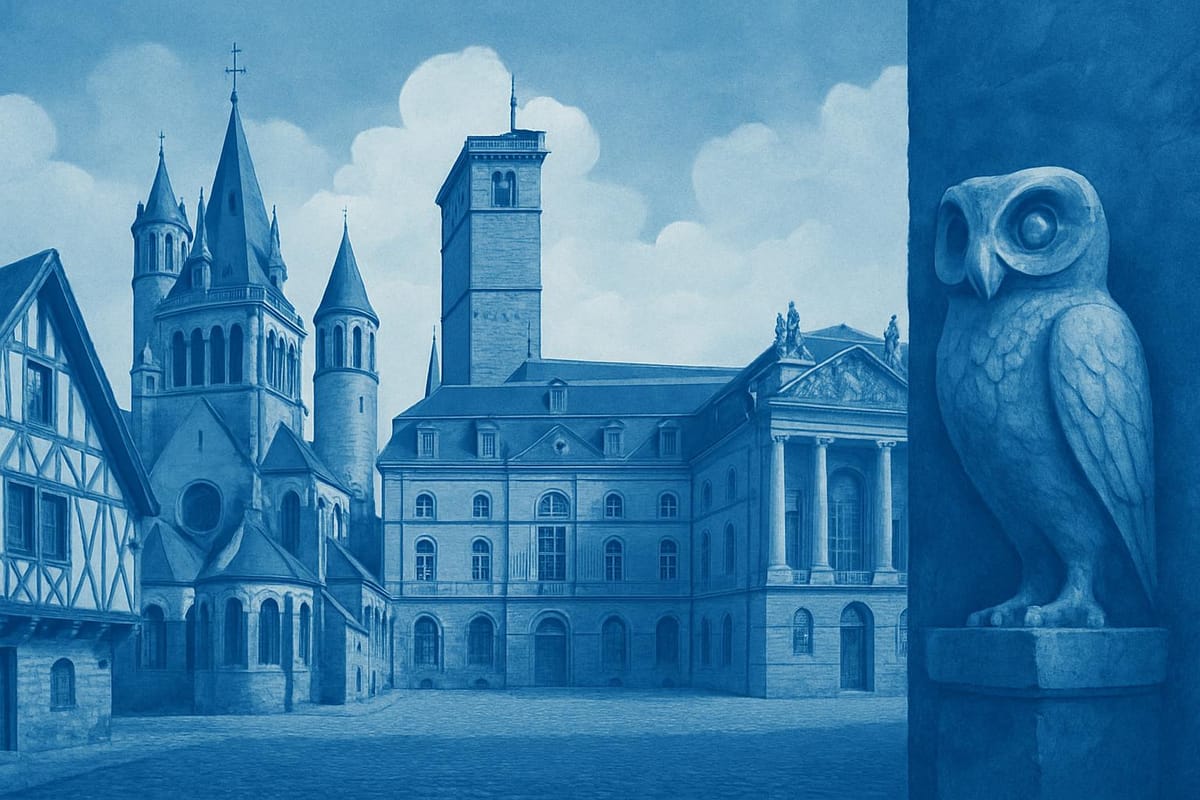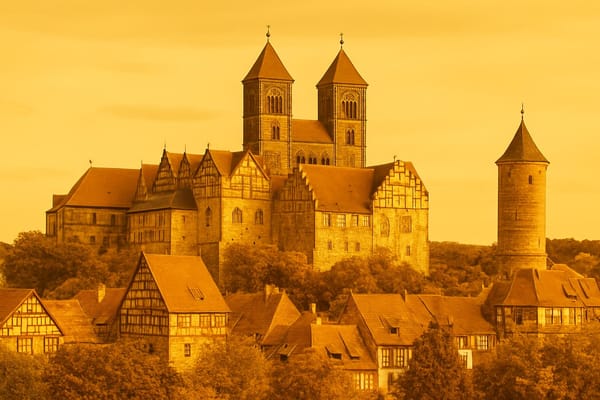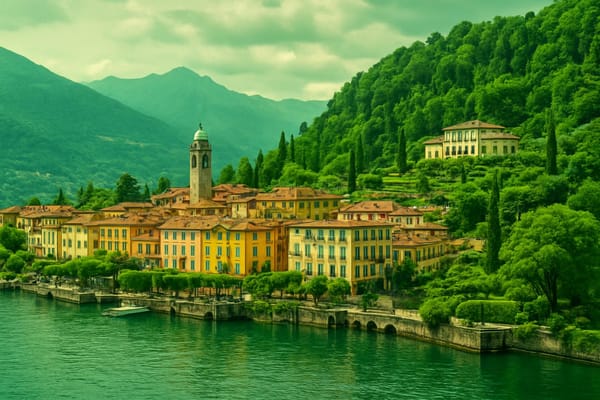Dijon
Medieval streets, ducal palace, famed mustard, wine tours and gourmet markets-historic charm awaits

Important things to know about Dijon
Dijon, France, is a vibrant city that blends historic charm with contemporary urban life, offering a compact yet dynamic experience in the heart of the Burgundy region; its streets convey a sense of layered history and evolving identity, where traditional gastronomy and modern culinary creativity coexist, reflecting the broader French emphasis on food culture and local produce. The urban fabric of Dijon highlights elegant architecture, pedestrian-friendly avenues, and a lively community scene that supports artisans, students, and professionals, while public transport and cycling infrastructure make the city accessible and sustainable for residents and visitors alike. Local markets, cafés, and neighbourhood bakeries contribute to a daily rhythm that celebrates seasonal ingredients and regional specialties, reinforcing Dijon's reputation for quality food and convivial living. Cultural life in Dijon is marked by diverse programming, thriving creative industries, and an active academic presence, with universities and research centers attracting a young and international population that energizes local commerce and innovation. The economy balances traditional sectors with modern services, offering opportunities in tourism-related businesses, education, gastronomy, and small-scale manufacturing. Green spaces, riverfront promenades, and a commitment to urban planning create an inviting environment for families and professionals, while festivals and community events nurture social cohesion and local pride. Overall, Dijon stands out as a French city where tradition meets modernity, making it an appealing place to explore regional culture, savor authentic flavors, and experience the subtle interplay of past and present in everyday urban life.
Sightseeing hot-spots in Dijon
Dijon is a compact city where medieval streets meet refined Burgundian culture, making it a top spot for sightseeing in Dijon. In the heart of the Old Town, the Palace of the Dukes dominates with its elegant façades and the Musée des Beaux-Arts, one of the oldest museums in France, housed within. Nearby, the ornate Notre-Dame of Dijon invites close inspection of its unique wooden statue and the famous Owl of Dijon carving-tourists often touch the owl for luck, a small ritual that connects visitors to the city’s traditions.
Food and wine are crucial to what to see in Dijon: lively markets and gourmet shops offer the classic Dijon mustard, local cheeses, and patisseries that make wandering the streets a sensory journey. The covered market Les Halles pulses with daily life and is perfect for tasting seasonal produce, while intimate bistros showcase Burgundy’s Grands Crus by the glass. For those who love museums, the regional history and art collections provide context for the city’s role in European culture and gastronomy.
Beyond museums and food, Dijon rewards exploration on foot or by bike: stroll the elegant Rue des Forges for boutique shopping, climb Tour Philippe le Bon for panoramic views over terracotta roofs, or relax in the leafy Parc de la Colombière. Small lanes open onto unexpected courtyards and carved stone doorways, and the banks of the Ouche River offer peaceful riverside walks. Whether focused on gastronomy, history, or picturesque architecture, sightseeing in Dijon, France delivers a memorable blend of sights and flavors.
Hotels to enjoy in Dijon
Dijon offers a rich selection of hotels in Dijon that suit every travel style, from elegant boutique hotels tucked into medieval streets to comfortable chain properties near the train station. Staying in the Dijon city center puts you steps away from the Palace of the Dukes, lively markets, and the famed gastronomy of Burgundy, making it easy to sample local mustard, cheeses and regional wines. Many visitors choose a hotel in Dijon for the charming blend of historic architecture and modern comfort; whether you prioritize a quiet courtyard, a rooftop view, or a central location for walking tours, the diversity of accommodation in Dijon ensures memorable stays for couples, families and solo explorers.
When searching for the ideal hotel in Dijon, consider practical amenities like Wi‑Fi, parking and breakfast service alongside ambience and proximity to attractions. Business travelers and event attendees will find well-equipped rooms near conference venues while leisure guests can focus on wine tours and day trips across Burgundy. Reading recent reviews and comparing rates helps locate the best value among Dijon hotels, from affordable options to luxury properties with spa services. Choosing the right neighborhood-whether the pedestrian centre-ville or a quieter residential area-will enhance your stay, making it easy to experience the culinary scene, museums and the warm hospitality that defines Dijon.
Restaurants to try in Dijon
Dijon’s food scene is a compelling reason to visit Burgundy, where Dijon restaurants blend traditional Bourgogne cuisine with contemporary creativity. Walking the historic streets, you’ll find cozy bistros, elegant brasseries, and innovative kitchens that celebrate local produce such as beef from the region, seasonal vegetables, and the famed moutarde de Dijon. Many restaurants in Dijon put an emphasis on pairing dishes with Burgundy wine, creating menus that showcase terroir and craftsmanship. Whether you’re hunting for a casual spot to taste local specialties or a refined dining room for a special evening, the variety and quality of restaurants Dijon offers makes the city a gastronomic destination with something for every palate.
Beyond the classics, Dijon’s dining scene is evolving with chefs who reinterpret French cuisine while honoring time-honored techniques. You’ll encounter menus that highlight slow-cooked confits, rich sauces, and inventive vegetarian options that reflect modern dining trends. For travelers and food lovers searching for the best Dijon restaurants, consider looking for places where seasonal sourcing and artisanal ingredients are central - those establishments often become must-try experiences. From bustling lunchtime eateries to intimate dinner venues, Dijon’s restaurants provide memorable meals that celebrate both regional heritage and contemporary culinary excellence.
Best shopping stops in Dijon
Dijon is a delightful destination for anyone who loves shopping with a strong local flavour, and shopping in Dijon blends historic charm with contemporary boutiques. Stroll along the bustling Rue de la Liberté and nearby streets where independent shops and well-known brands line the pedestrian avenues; you'll find fashion, homeware, and artisan designers framed by the city's golden stone architecture. Food lovers will gravitate toward Les Halles, the covered market at the heart of Dijon, where stalls brim with seasonal produce, charcuterie, cheeses and regional specialties. The city's reputation for Gastronomy means that every corner offers a taste of Burgundy: from delicate pastries and pain d'épices to jars of signature mustard, local chocolates and carefully curated gifts for travellers seeking authentic souvenirs.
Beyond the center, winding lanes like Rue des Forges host craft ateliers, independent bookshops and concept stores that reveal the creative pulse of Dijon. Wine shops and cellar doors showcase the best of Burgundy wines, making it easy to pair a bottle with local foie gras or artisan cheeses purchased nearby. Weekend markets and pop-up events spotlight local producers and contemporary makers, so Dijon markets are essential for discovering one-of-a-kind items and tasting true regional flavors. Whether you're hunting for haute couture, boutique homewares, or edible specialties, Dijon offers a compact, walkable shopping experience that celebrates tradition, quality and the pleasures of slow discovery.
Nightlife highlights in Dijon
Dijon nightlife comes alive as the sun sets over the historic center, where cobbled streets invite evening strolls and the scent of Burgundy wine drifts from cosy cellars. Whether you’re hunting for refined wine bars to sip regional pinot noir or seeking inventive craft cocktails, the city balances tradition and trend with ease. The old town is dotted with lively terraces and hidden courtyards perfect for a pre-dinner apéritif, while buzzy bars and chic lounges offer a warm, intimate atmosphere that highlights local gastronomy and conviviality. For visitors and locals alike, the blend of bars in Dijon and classic bistros creates a compact, walkable scene where every corner feels discoverable.
After dinner the rhythm shifts toward live music and late-night gatherings: small venues host jazz, electro and singer-songwriter nights, giving the nightlife in Dijon a vibrant, eclectic character. Energetic crowds-students, expats and locals-fill pubs and clubs in Dijon on weekends, where DJs and themed nights keep the tempo high until the early hours. Seasonal festivals and open-air concerts further enhance the night calendar, while friendly bartenders and knowledgeable sommeliers make it easy to explore Burgundy’s vinous treasures. For a memorable evening, follow the glowing façades and expect a warm welcome, diverse entertainment and the unmistakable charm of Dijon after dark.
Getting around in Dijon
Dijon offers a practical mix of air and rail options for travelers: the small regional Dijon-Bourgogne Airport serves mainly general aviation, business jets and a handful of seasonal or charter flights, so most international visitors rely on larger hubs such as Lyon, Geneva or Paris and transfer by rail or road, while those who prefer efficient rail travel will find Dijon-Ville station at the heart of the city’s connectivity, served by high-speed TGV services and regional TER Bourgogne-Franche-Comté trains that provide reliable train connections to major destinations like Paris, Lyon, Besançon and beyond; this rail hub makes Dijon transportation attractive for city breaks and business trips alike, with frequent services, easy ticketing options and onward local links by bus, taxi or rideshare to vineyards and attractions in the Burgundy region, ensuring strong public transport integration for seamless travel planning and solid SEO-friendly coverage of keyword needs such as Dijon airport, Dijon train station, TGV, TER and Dijon transportation for readers researching how to reach or travel through this historic French city.
Culture must-see's in Dijon
Dijon, France, is a city where history and art meet in a compact, walkable historic center that invites discovery. The Palace of the Dukes anchors the city with its imposing facade and the Musée des Beaux-Arts inside, housing collections that span medieval to modern works and making Dijon a must for museum lovers. Wandering the narrow streets, visitors follow the famous Owl Trail to find carved stone owls and hidden courtyards, while the architecture - from Gothic churches to Renaissance townhouses - tells the story of Burgundy’s past. Contemporary galleries and cultural venues complement traditional attractions, and regular exhibitions and festivals keep the Dijon cultural calendar lively, attracting art historians, students, and curious travelers who seek the authentic heritage of this French provincial capital.
Food and wine culture in Dijon is as rich as its history, with moutarde de Dijon giving the city an iconic culinary identity that pairs perfectly with Burgundy wine from nearby vineyards. The bustling market halls, such as Les Halles, offer seasonal produce, charcuterie, cheeses, and regional specialties that showcase the best of French gastronomy; many restaurants and bistros reinterpret these classic flavors with modern techniques. Wine-tasting tours, cellar visits, and gourmet workshops make Dijon a gateway to the Burgundy terroir, while annual events and food festivals celebrate local producers and culinary innovation. From intimate wine bars to lively street markets and world-class museums, Dijon’s cultural highlights provide a full sensory experience of art, history, and gastronomy in the heart of Burgundy.
History of Dijon
The history of Dijon stretches back to a Roman crossroads when the settlement known as Divio sat on routes linking the Seine to the Rhône. Over centuries this modest town grew into the capital of the powerful Duchy of Burgundy, and its fortunes rose highest under the Dukes of Burgundy in the late medieval period. The city center still bears the imprint of that era: narrow streets, timber-framed houses, and grand stone façades that reflect Gothic and Renaissance sensibilities. The Palace of the Dukes remains a focal point, its evolution from ducal residence to civic building mirroring Dijon's transformation from feudal court to modern regional capital. Religious life shaped Dijon too, with churches like Notre-Dame of Dijon offering sculptural marvels - most famously the small owl carving that has become an emblem for visitors to touch for luck. Through turmoil and renewal, including the turbulence of the Hundred Years’ War and later the French Revolution, Dijon’s civic and architectural fabric preserved a continuity of identity rooted in Burgundy’s political and cultural influence.
In the modern era the history of Dijon is also a story of preservation, gastronomy and cultural reinvention. The city’s culinary reputation - anchored by Dijon mustard and regional Burgundy wines - has promoted global recognition even as local museums and restored streets invite deeper exploration of the past. Dijon plays a role in international heritage conversations: nearby vineyard landscapes, known as the Climats of Burgundy, have been inscribed on the UNESCO World Heritage list, reinforcing the region’s link between terroir, history and identity. Urban renewal projects in the 19th and 20th centuries enhanced transportation and education, while careful conservation kept key medieval and Renaissance monuments intact. Today Dijon balances tourism with living culture: festivals, university life, and a vibrant arts scene build upon centuries-old foundations. For anyone researching the Dijon history or planning a visit, the city offers a compact, richly layered narrative where Roman beginnings, ducal grandeur, and culinary fame converge into a distinctive European story.



